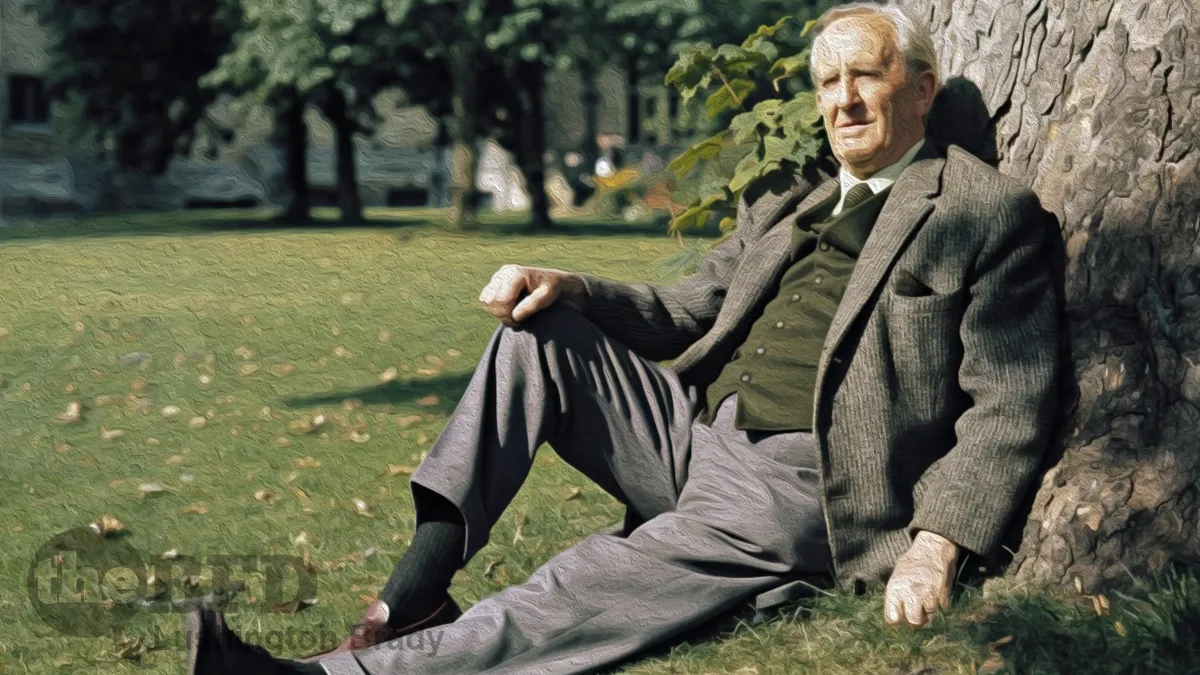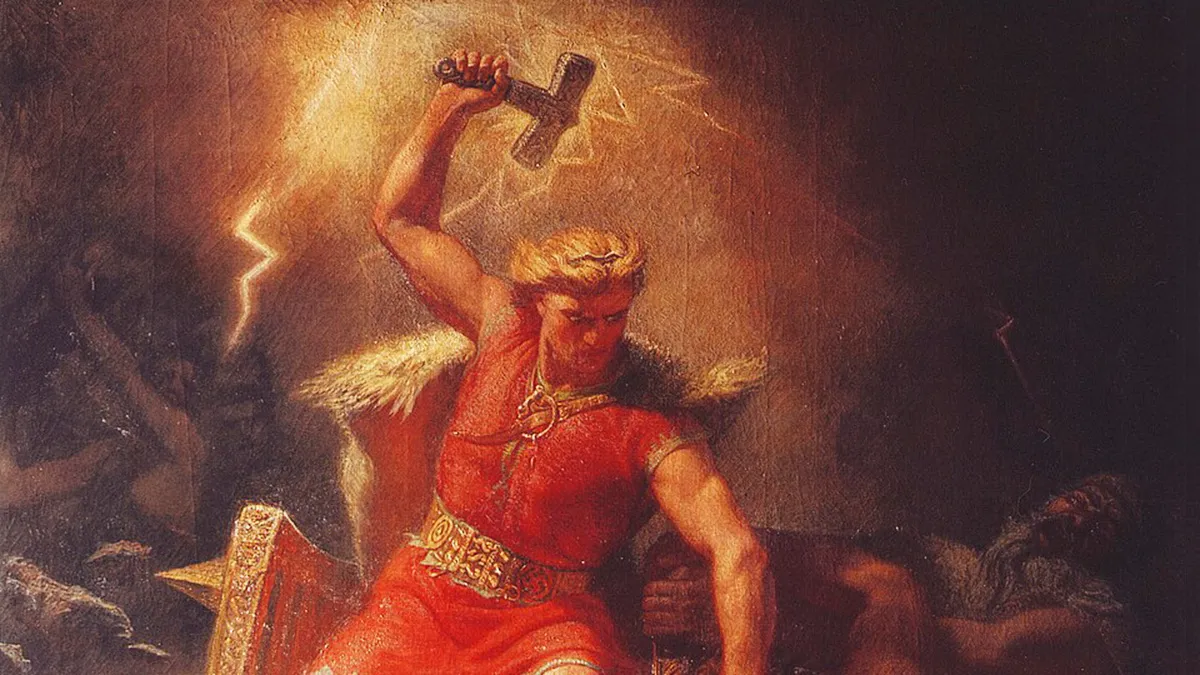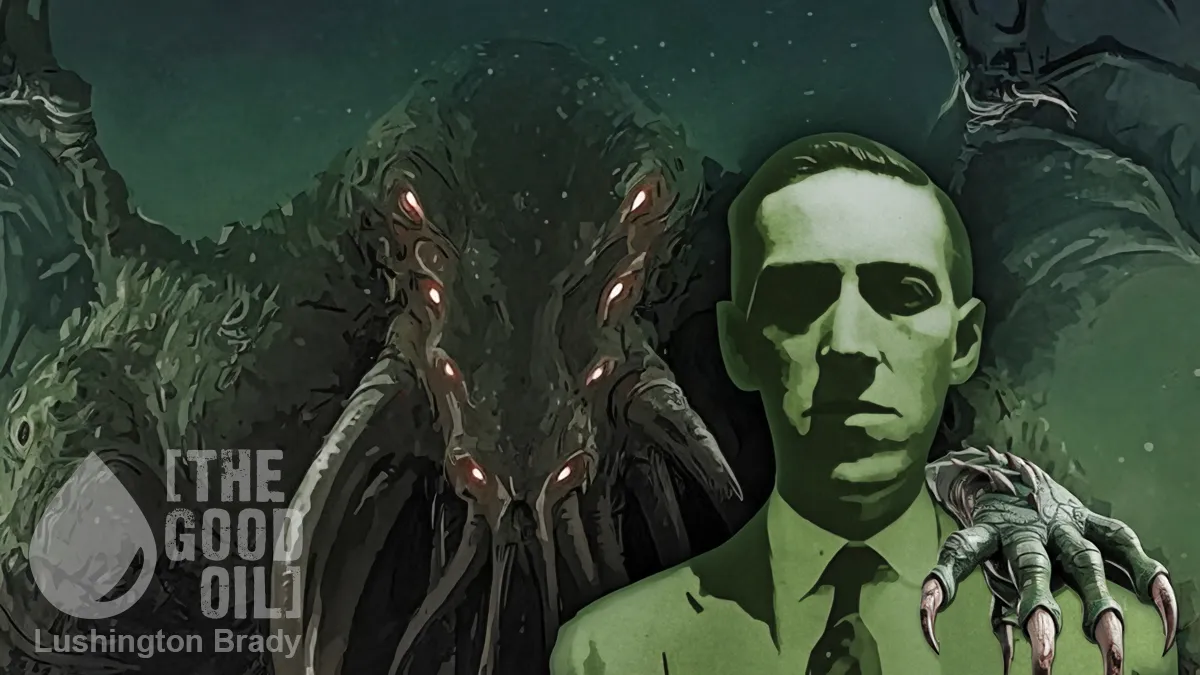The 2019 biopic Tolkien was heavily criticised for almost completely omitting what was one of the central pillars of the author’s life: his Catholic faith. Trying to tell the story of Tolkien’s life without mentioning religion is like trying to tell the story of Hunter S Thompson without mentioning guns or drugs.
Ironically, though, Tolkien’s religiosity long escaped even his most devoted fans. A college professor of the ’60s once remarked that, if he’d tried to teach his students a course in conservative Christian apologetics, they’d riot – yet, there they all were, devouring The Lord of the Rings and wearing “Frodo lives!” buttons.
Although he was not as blatant as his friend and collaborator C S Lewis, Tolkien left plenty of clues in LOTR. For instance, the quest of the Ring begins on 25 December, and ends on 25 March – at which point, Frodo passes into near-death until his return to life days later. Those dates, in case you hadn’t noticed, correspond to Jesus’ birth and either the Annunciation (Jesus’ mortal incarnation) or the earliest dates for Easter (Jesus’ death and resurrection).
Whoa – heavy, as the hippies might have said, if they’d noticed.
But what was implicit in LOTR became explicit in what was Tolkien’s true life work, the massive compendium of legends of the Elder Days of Middle-earth, released as The Silmarillion in 1973. In the earliest chapters of that book, the creator spirit Eru, “the One”, guides his angelic choirs in making mighty themes of music which are then made incarnate as the world of Middle-earth, and all its history.
Tellingly, the mightiest of these angelic beings, Melkor, becomes prideful and attempts to make music of his own. Melkor eventually and inevitably ‘falls’ into darkness and evil, becoming the satanic “Morgoth”, the “dark enemy of the world”.
It is obvious from the first pages of The Silmarillion to the last pages of The Lord of the Rings just how much Tolkien’s Catholic background and knowledge of scripture influenced his writing, even though he probably went through great pains to mask most of it […]
This story of creation has a distinct Genesis feel to it, placing it squarely in a Judeo-Christian tradition. Melkor craved power, which led to his downfall and defeat. Admittedly, it sounds much more like Milton’s fictionalized take in Paradise Lost.
Indeed, the theme of beings with great God-given gifts succumbing to their pride and falling into darkness recurs again and yet again in Tolkien’s work. The antagonist of LOTR, Sauron, begins, like Melkor, as a supremely gifted angelic being, before falling like his master, Morgoth, to the sin of pride. In particular, at the end of the Elder Days, when Morgoth is overthrown, Sauron is offered redemption – and in his pride, refuses. Most notably, it is Sauron’s disdain for the probability of serving a long sentence as redemption that sways his mind: non serviam, indeed.
In their turn, the men of Numenor were rewarded for their service against Morgoth with not just a blessed island dubbed “the Land of the Gift”, but great wisdom and longevity. But those gifts lead the men of Numenor into the old sin: pride. Sauron weaponises their pride into rebellion against the angelic powers – and thus brings about their downfall.
For their disobedience, Tolkien’s deity obliterated the island, sinking it beneath a vast ocean. Much like a second Lucifer, Sauron was practically destroyed in the attack, however he was not killed. The deity allowed small groups to survive and build new kingdoms in Middle-earth. While the Numenorean’s Middle-earth kingdoms of Arnor and Gondor were never as magnificent as the island had been, they were still capable of inducing awe from the wild men of Arda. In a way, these men were Tolkien’s “chosen people”.
Sauron eventually resurfaced after the forging of the Rings of Power. The rings were given to the elves, dwarves and several kings of men. Sauron, being the evil figure that he is, began forging a master ring to enslave the will of the other races to his own. Needless to say, this sparked a great war in which Sauron was again defeated and reduced to a spiritual form.
But not destroyed. Knowing that Sauron would return yet again, the holy powers send messengers – the five wizards of whom Gandalf and Saruman are best known – to aid in the long war against evil. Tolkien in a letter explicitly referred to the wizards as angels, in the sense of the original Greek word, “an angelos or messenger from the Valar or Rulers: to assist the rational creatures of Middle-earth to resist Sauron, a power too great for them unaided”.
In the same letter, though, Tolkien writes that because the wizards (or angels) were incarnated, they “suffered the pains both of mind and body”. More importantly, “they were also, for the same reason, thus involved in the peril of the incarnate: the possibility of ‘fall’, of sin, if you will”. To this peril, Saruman succumbs, again in his pride, to become yet another would-be Satan.
But Tolkien didn’t just populate Middle-earth with satans.
There are also two Christ figures. Gandalf and Aragorn both exemplified traits that are common to the concept of Jesus Christ. Gandalf is humble, which is most obvious when he is recognized as wise, yet does not seek the leadership of his own order. Additionally, while being of the same order and spirit as Sauron, Gandalf never attempts to match him with power. He travels and advises those that will and will not listen to him, attempting to spread wisdom in a roundabout way to combat evil. The image of Christ is driven home when Gandalf is struck down, only to be resurrected to save the people of Middle-earth.
When one adds Aragorn into the fold, there is a striking resemblance in story lines.
Aragorn is a distant descendant of marriages of, not just men and immortal elves, but of an elf and one of the angelic powers made incarnate. He is also descended from two legendary founding kings, Elendil and his son Isildur.
In this scenario, Elendil and Isildur would be synonymous with King David and Solomon […] Old and New Testament prophesy placed significant importance on Jesus Christ’s ancestry, linking the “messiah” to King David. The same can be said with Aragorn, who was the son of the king and of man. In both cases, ancestry was important in establishing kingly and royal legitimacy.
Biblically Blogging
It’s worth mentioning, too, that Tolkien was the pre-eminent scholar of the Anglo-Saxon epic Beowulf. Tolkien said it was “among my most valued sources”. In many ways the Iliad of England, Beowulf was written at a time when the recently-converted Anglo-Saxons were reconciling their pagan, Germanic mythologies with their new Christian faith.
Tolkien, who loved the pagan Norse, Celtic and Greek mythologies, must surely have found inspiration in Beowulf for fusing his own devout Christianity with his “ardent desire” for dragons that remained from his boyhood (his very first story, at age seven, was about “a great green dragon”) and through his life.









